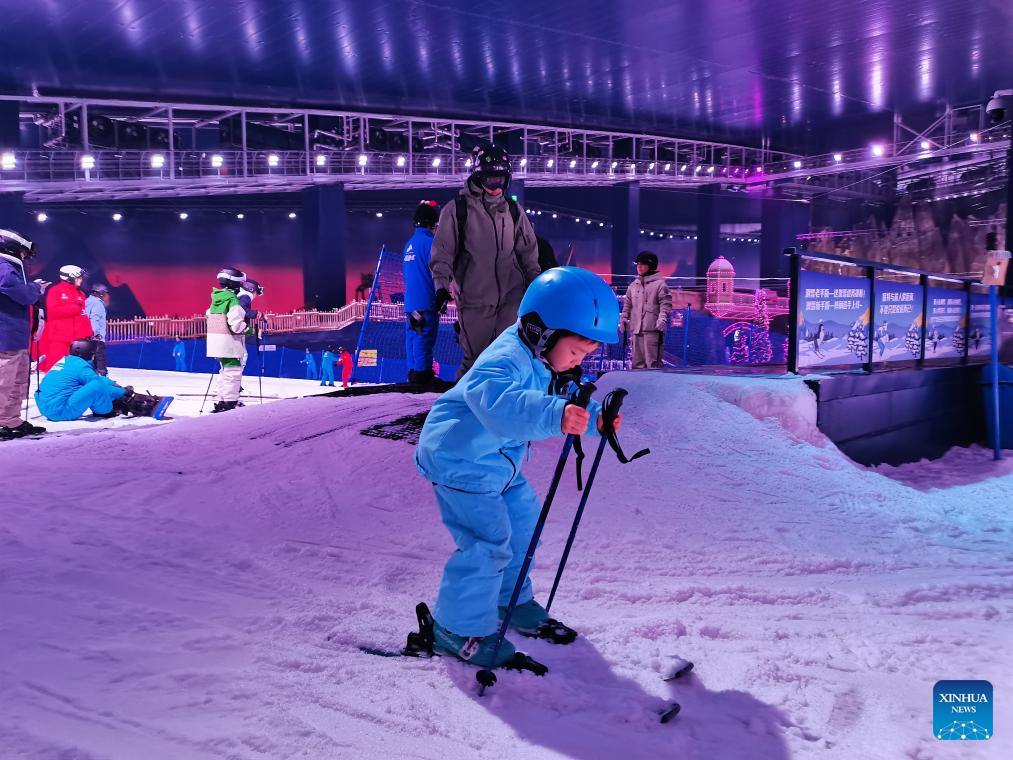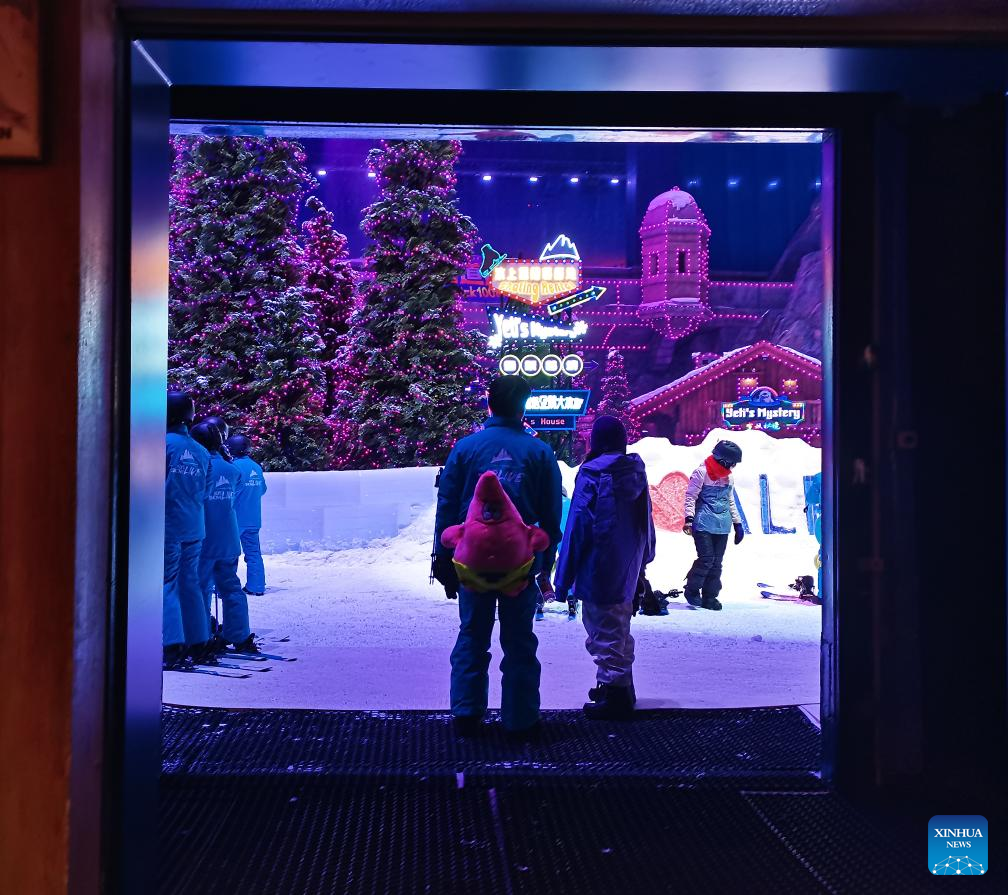Across China: Ski facilities on the rise in regions with rare snowfall
Source: Xinhua
Editor: huaxia
2025-01-17 19:13:45

A boy ski at the indoor ski resort Alps Snow Live in Taicang County, east China's Jiangsu Province, Dec. 28, 2024. (Xinhua/Jiang Wenxi)
NANJING, Jan. 17 (Xinhua) -- Northern China, with its abundant winter snowfall and mountainous landscape, is a paradise for skiers and snowboarders. In recent years, ski resorts in the Yangtze River Delta region have also allowed people in China's subtropical region to engage in winter sports.
After driving an hour from Shanghai, 24-year-old ski enthusiast Deng began her adventure at the Alps Snow Live indoor ski resort in east China's Jiangsu Province's Taicang City, where snowfall is rare and daytime temperatures can rise to 10 degrees Celsius in January.
"I fell in love with skiing on Changbai Mountain in northeast China. However, the three-hour flight from Shanghai made frequent visits a challenge. Taicang is convenient for a weekend getaway," Deng said.
For Shi Xi, a 33-year-old snowboarder, the indoor resort makes the sport more accessible and affordable for local residents. "Beginners can try skiing and snowboarding more easily at this nearby indoor resort, and decide whether to continue practicing," she said.
About one in six Chinese people live in the Yangtze River Delta region, which includes Shanghai Municipality and the provinces of Jiangsu, Zhejiang and Anhui. The region's GDP accounts for nearly 25 percent of China's total. This densely populated economic hub has seen a surge in winter sports since 2015, when China won the bid to host the Winter Olympics.
Qu Qinrui, the manager in charge of brand marketing for Fosun Tourism Group's Taicang project, which operates Alps Snow Live, said that the ski resort's visitor flow often reaches its maximum capacity of 4,000 people during snow-season holidays.
Qu said that the resort has been planning to provide top-level indoor ski training and tournaments, and to build its second phase by February, which will include three new slopes totaling 1,700 meters in length and with a maximum vertical drop of 120 meters.
"We have confidence in China's booming winter sports industry. Eastern China has a vast potential market, and consumers with strong purchasing power who are willing to spend on novel experiences and an established sports atmosphere," Qu said.
According to a report from the General Administration of Sport of China, most of the country's indoor ski resorts are located in regions to the south of the Yangtze River, and they increased in number from five during the 2013-2014 ski season to 59 in the 2023-2024 season.
To keep the indoor slope in top shape, Alps Snow Live makes, compresses and replaces its snow on a regular basis, and has introduced a system that maintains a temperature of minus 1 to minus 6 degrees Celsius. As snow and winter sports are relatively inaccessible to residents of the Yangtze River Delta region, the resort offers safety lessons and stations a 20-strong patrol team on its slope conveyor belt and on surrounding slopes each work shift.
In other regions to the south of the Yangtze River, indoor and outdoor skiing has also become trendy, unleashing local tourism potential.
In Zhejiang's Tonglu County, where the average winter temperature is above freezing, the Shengxianli International Ski Resort maintains its meter-thick snow layer by making snow at night, ensuring a safe and enjoyable skiing experience for visitors, even including thawing snow during the day. Tourists can also explore stalactite caves, ancient Buddhist temples and other attractions in the county after they finish skiing.
The Guangzhou Bonski indoor ski resort in south China's Guangdong Province provides year-round skiing and other snow-related entertainment. Tourists there can also visit nearby water park, theme park and sports park facilities.
"Regions south of the Yangtze River should develop winter tourism facilities to broaden the reach and diversity of participants," said Tu Lifeng, vice dean of the Soochow University Think Tank, adding that tourists can also visit natural scenic areas and cultural heritage sites after their winter sports to enjoy a multifaceted travel experience.
Approximately 313 million people have engaged in ice and snow sports or related leisure activities in China since the 2022 Beijing Winter Olympics, according to the General Administration of Sport of China.
China aims to promote its ice and snow economy as a new growth point, with the goal of reaching an economic scale of 1.2 trillion yuan (about 167 billion U.S. dollars) by 2027, according to guidelines issued by the General Office of the State Council in November 2024.
"The growing demand for winter sports in regions with rare snowfall has fueled advancements in skiing facilities, including snow-making and snow-compressing equipment. These innovations not only enhance the sports experience but also induce new growth points for the technological and industrial development of winter sports," Tu said. ■

People visit the indoor ski resort Alps Snow Live in Taicang County, east China's Jiangsu Province, Dec. 28, 2024. (Xinhua/Jiang Wenxi)



